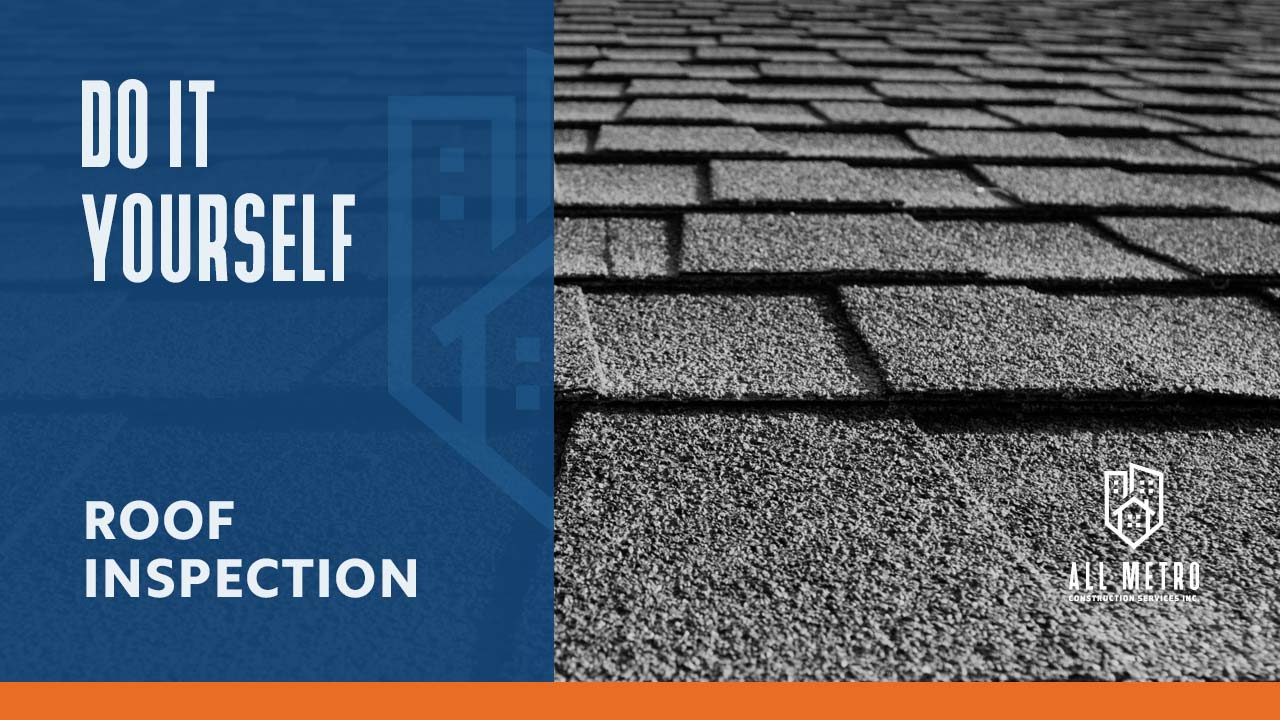DIY Roof Inspection

It’s that time of year again where most of us are crawling on our roofs and hanging lights. We figured, why not make your trip up there more productive and give your roof a quick inspection? Not sure what to look for when you’re inspecting your roof? Here’s our quick DIY roof inspection guide!
How Often Do You Need to Inspect Your Roof?
The National Roofing Contractors Association recommends checking your roof twice a year: once in the spring and once in the fall. If you live in a stormy area or have experienced more storms than normal, we recommend checking your roof more frequently. To be on the safe side, you should try to check your roof annually.
If your roof is under 5 years old, a simple inspection will do. This is as simple as taking a walk around your home and inspecting it from the ground up. If your roof is over 10 years, we recommend a more thorough inspection. Keep in mind the average roof lasts 15-30 years. Proper maintenance will help them last on the longer end of that estimate.
What to Inspect and Warning Signs
- Check the flashings. Flashings are the metal pieces on a roof that cover the edges and curves. These can be found around vents, chimneys, and vent pipes. Check for any areas that water can get into. This can be gaps, rust, cracked caulking, or accidental nail holes.
- Check your shingles. Missing or broken shingles are your biggest sign that you will need a repair. Some shingle problems aren’t as easy to spot so it’s important to know what to look for.
- Asphalt Shingles – Asphalt roofing has a granular surface similar to fine gravel. As your roof ages, these granules will start to shed. Inspect your gutters for these granules and also check for tears, warping shingles, shingles curling up and bare spots. Nails that are not ground in fully, can also cause problems for your shingles. So make sure your nails are flush with the roof.
- Wooden shakes or shingles – Check for shingles that are warping or rotten. Reminder: never walk on a roof that has wooden shakes or shingles when inspecting.
- Metal Roof – Typically, metal roofs are made to last long. Some can last up to 50 years! Despite their longevity, they should still be inspected. Look for signs of rust, corrosion, open seams or joints, and pitting.
- Inspect vent boots. Rubber boots are placed around the vent pipes to help prevent leaks. These collars get worn down over time and occasionally crack. Look for wear and cracks to prevent future roof leaks.
- Look for moss, lichen or algae growth. Wet weather promotes the growth of moss, lichen, and algae on rooftops. But, it can also signal a sign of decay underneath a roof. If you see signs of plant growth on your roof, make sure there is no rot underneath.
Stay Safe
It’s important to stay safe when inspecting your roof (or hanging lights)! Sometimes, basic safety procedures are common sense. For instance, don’t inspect your roof when it’s icy. We think it doesn’t hurt to have additional safety reminders before walking on your roof.
- Set your ladder up in a sturdy location. Make sure your ladder is placed firmly on a flat surface and extended beyond the eaves of the roof. Ensure that you are not leaning it too steep or too flat. If you have to place it against the gutters, try reinforcing them first with a 2×4.
- Never work on a wet, icy, or snowy roof. This may seem like common sense, but it is also one of the main reasons people fall from their roofs.
- Wear proper footwear. Soft-soled boots are ideal for working on a roof. Leave your flip-flops for the beach.
- Consider using a harness or other safety gear. If your roof is steep, we recommend wearing proper safety gear. Having a safety harness, a net, or guardrails are especially helpful for roof inspections.
- Wear a helmet. On the off chance that you do fall, wearing a helmet can prevent a serious head injury. Invest in one of these if you plan on being on your roof more frequently.
For more reading on roofing safety, we recommend reading this article from GAF roofing manufacturer.
Fix It Or Call A Contractor
So now that your roof is inspected, what do you do for repairs? It really depends on how bad the damage is and how much you are willing to do. If you only have minor repairs to your roof, they may be easy to replace yourself. On the other, larger repairs may require a contractor. Ultimately, it is up to you to decide how much you are capable of doing, and when you’ll need to call someone.
If you do need to call a contractor, look for a GAF certified roofing contractor. And read our blog post about GAF Certified Contractors here on why it’s important for getting your repairs and roofs installed correctly.
If you find areas on your roof that you are unsure about, give us a call for a free estimate and we can help you determine what repairs need to be made.
Filed Under:
Free Download
How to hire the right contractor